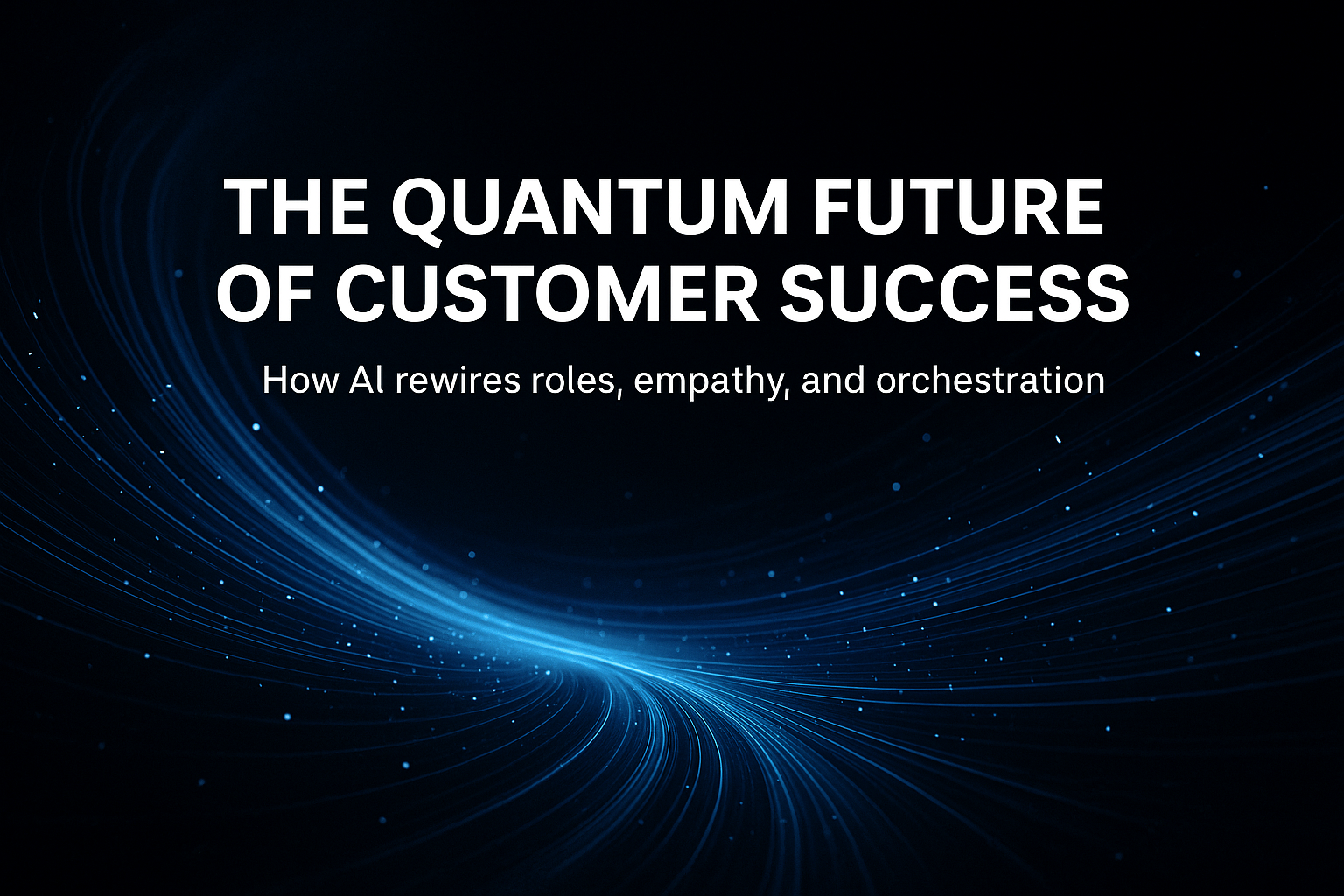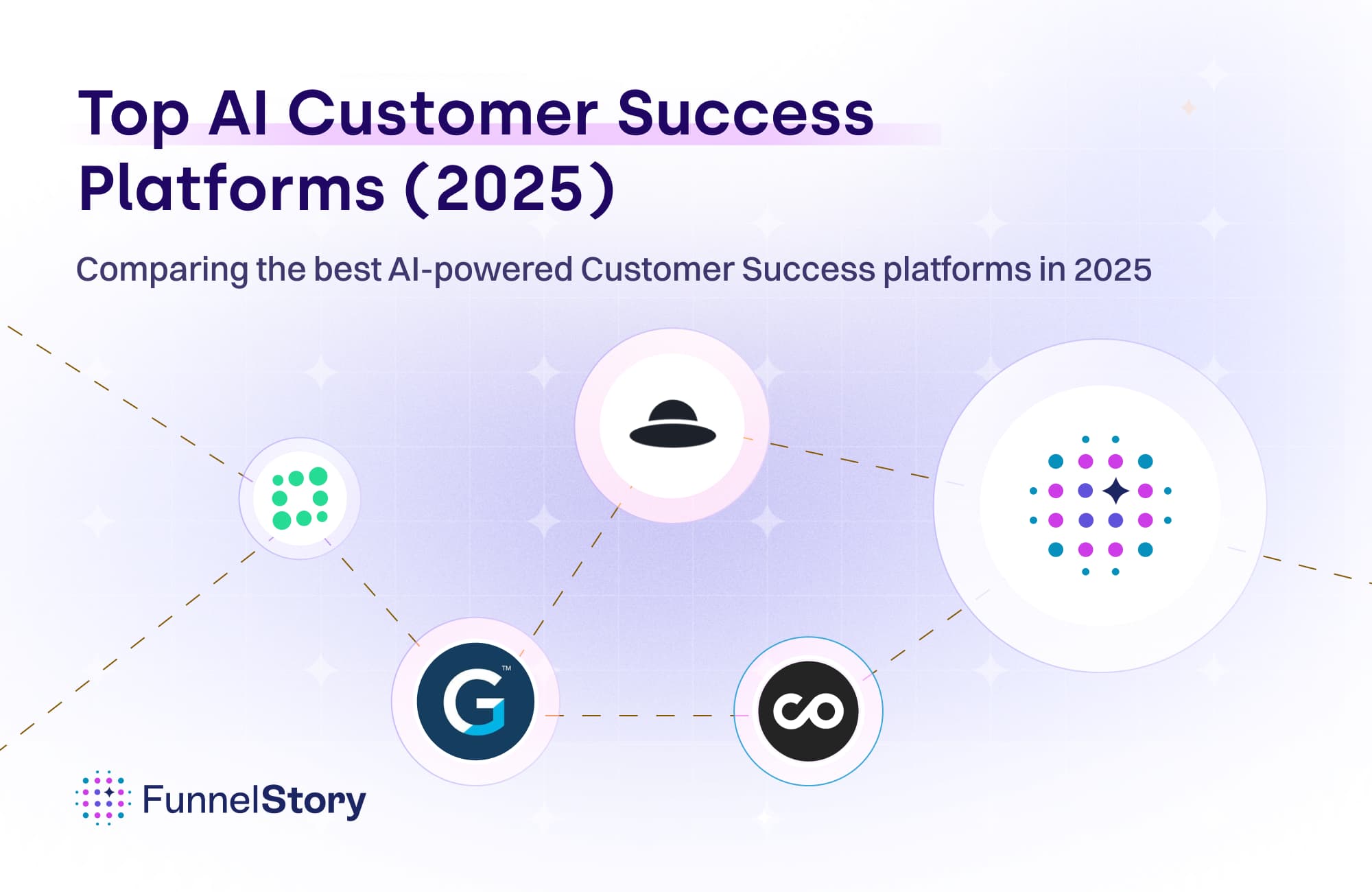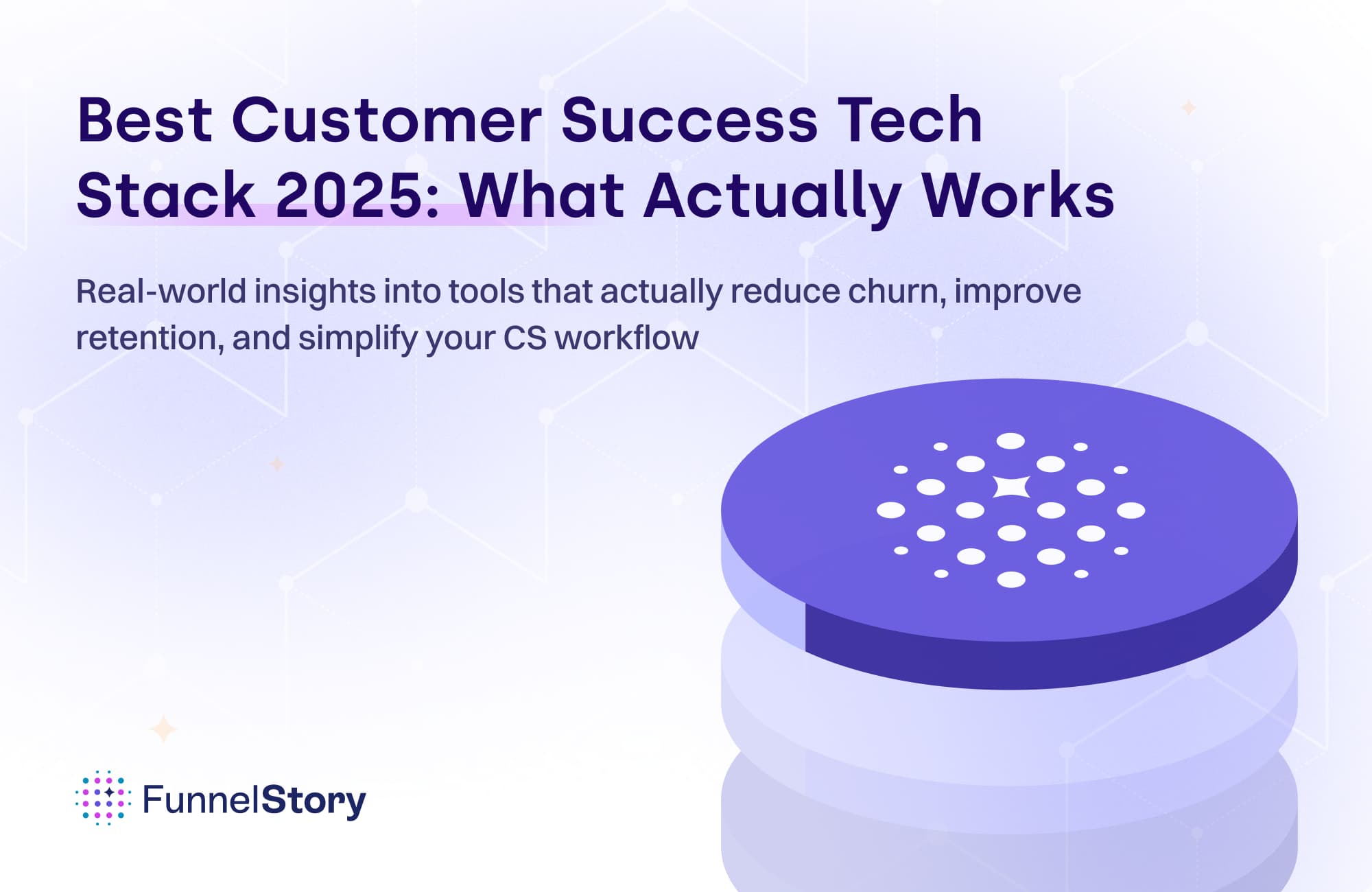In this article
Mastering Product Analytics With Your PLS Strategy
Explore the transformation of Product-led Sales (PLS) through analytics. Uncover key tools, align with sales needs, and avoid hidden costs. Discover FunnelStory's unique stance in the PLS realm.

By Alok Shukla
Cofounder and CEO
Sep 20, 2023
10 min read
In the rapidly evolving world of Product-led Sales (PLS), leveraging the right analytics tools is pivotal. Dive into this guide to understand the seismic shift in Product-Led Growth, the importance of aligning your tools with your internal sales team's needs, and the must-have features for PLS measurement. Along the way, we'll unravel hidden costs to watch out for and provide insights into the future of PLS analytics. Discover how FunnelStory stands apart in this landscape and consider its potential in your PLS journey.

Introduction: The Age of Data in Product-led Sales
In the ever-evolving world of business, a new star has risen on the horizon: Product-Led Growth (PLG). A strategy that emphasizes product excellence and user experience, PLG is no longer just an approach—it's a revolution. And at the heart of this revolution lies data.
Gone are the days when businesses could rely solely on persuasive sales pitches or captivating advertisements. Today's users demand products that speak for themselves, seamlessly integrate into their daily lives, and deliver tangible value. They seek experiences, not just features. And understanding these experiences, mapping them, and continuously improving them is where data plays a pivotal role.
But why is data so essential in the PLG paradigm? It offers a window into the user's journey, illuminating their interactions, pain points, delights, and much more. It equips businesses with actionable insights to refine product offerings and adapt to shifting user needs. The product is no longer a static entity but an evolving one, molded continuously by the influx of user data.
Moreover, data provides a competitive edge in this age of fierce competition. It empowers companies to anticipate market trends, predict user behavior, and innovate proactively. In essence, in the PLG era, data isn't just a byproduct of user interactions—it's the driving force behind product evolution.
But, as we'll explore in the chapters ahead, harnessing this data has its challenges. How do we ensure the right data reaches the right hands at the right time? How do we bridge the gap between vast data pools and actionable insights for sales teams? Join us as we delve deep into product analytics, tooling, and the ever-important alignment between data and sales strategy. Welcome to the age of data-driven PLG!
The Birth of Product-Led Growth and its Impact on Sales and Products
The rise of Product-Led Growth (PLG) can be traced back to a paradigm shift in how businesses approach growth strategies. Traditionally, growth was often spearheaded by sales and marketing teams, whose primary task was to sell a product, often designed with limited feedback from its end-users. But in today's hyper-connected world, with easy access to information and user reviews, customers have more power than ever. They can and do demand products that deliver real value and fit seamlessly into their workflows.
Enter PLG, a strategy where the product takes center stage. Instead of focusing on external sales tactics, companies adopting a PLG approach prioritize creating stellar products that users love and, more importantly, that they can't live without. It's about putting the user first, understanding their needs, and delivering a product experience that meets and exceeds their expectations. For a deeper dive into how businesses can effectively adopt PLG in a B2B scenario, check out our post on "Getting Started with Product-Led Growth (PLG) Journey in B2B."
This shift towards a product-centric model has had profound implications for sales and product teams. Sales processes in the PLG era have evolved from transactional interactions to holistic partnerships. It's less about selling a product and more about guiding potential users through a value-driven journey. Sales teams today aren't just deal-closers; they're educators, consultants, and, most crucially, product evangelists. They bridge the gap between what a product offers and the value it can deliver to a particular user or business.
Product teams are in the limelight on the other side of the spectrum. They have access to an unprecedented amount of user data, which, if utilized correctly, can lead to product enhancements that directly correlate with user needs. The feedback loop is tighter, making products more responsive and agile.
However, while the PLG approach offers tremendous advantages, it also presents unique challenges, especially concerning data analytics and ensuring that the insights derived cater to the needs of sales teams. As we'll uncover in the subsequent chapters, getting this alignment right is crucial for businesses looking to leverage the power of PLG fully.
Knowing Your Internal Customer: Identifying Data Needs
In Product-Led Growth (PLG), data isn't just power—it's the compass that guides strategic decisions. However, just having access to data isn't enough. Knowing who will be using that data and for what purpose is essential.
The internal customer, typically your sales team, is at the heart of any effective PLG strategy. They are at the front lines, interfacing with potential leads, understanding customer pain points, and positioning the product to address those needs. They need data that are relevant, actionable, and tailored to their objectives.
However, there's a prevalent issue in today's data-driven landscape. Many analytic tools are designed with a one-size-fits-all approach. While they may offer a plethora of data points, not all of them resonate with the needs of the sales teams. This disconnect can lead to inefficiencies, where sales representatives spend precious time sifting through heaps of data that don't drive conversions or enhance customer relationships.
As highlighted in our article "Counterpoint: Product Analytics is not Helpful for Sales Teams," the mismatch between the tooling and the sales team's actual needs can be a significant roadblock. Data should be a facilitator, not a hurdle. Investing in tools and systems that reflect the specific requirements of those using them is crucial, ensuring that your sales team can leverage insights to fuel growth effectively.
Essential Features for Successful PLS/PLG Business Measurement
When venturing into Product-led Sales (PLS) or Product-Led Growth (PLG), the key to success isn't merely the adoption of tools but rather the integration of the right ones. Only some tools are tailored for PLS/PLG; understanding the essential features is paramount. Let's dive into the non-negotiables when measuring PLS:
Real-time Data Access: In the dynamic world of sales and products, real-time insights can differentiate between missed opportunities and conversions. Tools should provide instantaneous data, allowing teams to pivot strategies quickly.
User Behavior Analytics: Understanding user interaction with your product is pivotal. Whether click-through rates, session durations, or feature adoption, a comprehensive view of user behavior can help refine product offerings.
Segmentation Capabilities: Not all users are the same. Segmenting data based on user profiles, usage patterns, or industry sectors can lead to more tailored strategies and personalized outreach.
Integration Ease: In the PLS era, data sources are abundant. Your measurement tool should seamlessly integrate with other platforms in your tech stack, ensuring a fluid data exchange across systems.
Scalability: As your business grows, your tools should grow with it. Choose platforms that can handle increased data volume without compromising performance.
Customizable Dashboards: Every team has unique data needs. Customizable dashboards allow teams to see the metrics most relevant to them at a glance, aiding quicker decision-making.
Data Security: With the rise of cyber threats, ensuring the security and privacy of user data is non-negotiable. Always opt for platforms that prioritize data protection.
Incorporating a tool with these essential features ensures that your PLS/PLG initiatives are data-driven, efficient, and, most importantly, successful.
Analytic Tooling Options: A Deep Dive
CDPs and Their Role
Customer Data Platforms (CDPs) have surged in importance in the PLS landscape. Platforms like Segment centralize user data from multiple sources, providing a holistic view of customer interactions. They help unify data, ensure consistency, and allow teams to derive actionable insights.
Reverse ETL Tools and Their Significance
Extract, Transform, and Load (ETL) processes traditionally move data from diverse sources (i.e., business applications) into a single database. Reverse ETL tools, like Hightouch, do the opposite - they take data from a warehouse and sync it to operational tools. In PLS, actionable data can be moved seamlessly where needed most, enhancing functionalities like personalized marketing or targeted sales campaigns.
However, while these tools are transformative, they don't offer a one-size-fits-all solution. More than CDP and Reverse ETL are needed for your sales team; delve deeper into their limitations in the context of sales teams.
Product Analytic tools
Product analytics tools, like Amplitude, are used to track and analyze user behavior in digital products. They're designed to help product teams understand how users interact with their products, identify areas for improvement, and measure the impact of changes. By design, they typically track a variety of user events, such as page views, button clicks, and feature usage. This data can then create reports and dashboards that provide insights into user behavior, trends, and patterns.
But here in lies the problem, they're really designed for Product teams, not sales teams. In a PLS strategy sales teams need different data and visualizations of how accounts are progressing through a sales funnel.
Data Visualization Tools
Another way to go about leveraging your product data is to DIY a solution using your existing visualizing tech like Looker or Mode. Sure you can build fancy charts and graphs, but these tools don't really answer any questions - they just visualize data. Again, this is useful in some instances but not all - especially monitoring your product trials. Also, DIYing a solution requires time and resources that you might not have.
Other Key Tools in the PLS Landscape
The PLS tool ecosystem is vast, ranging from engagement analytics platforms to onboarding tools. While each has its merits, it's crucial to understand their utilities and limitations. For instance, while some tools provide granular user engagement metrics, they might need more predictive analytics or integration capabilities.
In essence, PLS's right mix of tools enhances and defines strategy. Knowing which tools align with specific business goals is the first step in a successful PLS journey.
Beware of Hidden Costs: Development Time and Monetary Investments
Navigating the dynamic world of PLS tooling, it's easy to be lured by flashy features and impressive demos. However, the true cost of a tool isn't just its subscription price.
Pitfalls of Incomplete Information
Many organizations need to understand the long-term implications to adopt tools fully. While initially appearing cost-effective, some tools require extensive development time to integrate into existing systems or adapt to unique business processes. Additionally, training teams to proficiently use the tool can drain time and financial resources. It's essential to weigh these indirect costs against potential benefits.
The FunnelStory Differentiator
In the nascent market of PLS tools, FunnelStory stands apart. It's not just a product; it's a solution designed with real-world challenges in mind. While some tools necessitate the usage of other tools to move data around, leading to hidden costs, FunnelStory offers an integrated experience that minimizes development time with a built-in Reverse ETL capability. It also completes the picture by folding in conversational data and then handles all of the visualization work for you, in the way sales teams like to see their account data - in a funnel view.
By focusing on direct value addition and seamless integration, FunnelStory ensures revenue leaders can mitigate unforeseen expenses, understand their business, and focus on the only thing that matters - growth.
Conclusion: The Future of PLS and Analytic Tooling
While already transformative, the PLS landscape is still in its early days. As organizations increasingly recognize the value of product-led strategies, the demand for more advanced, efficient, and cost-effective analytic tools will surge.
We're heading towards a future where product analytics won't just be about measuring and monitoring but predicting and proactively shaping user experiences. With AI and machine learning innovations, we expect analytic tooling to offer more real-time insights, automation, and even predictive modeling.
Yet, amidst this technological boom, one principle remains unchanged: understanding your user. As tools evolve, their primary role will always be to help businesses connect better, deliver more, and grow sustainably. The future is promising for PLS, and those with the right tools will undoubtedly lead the charge.
Navigating the ever-evolving landscape of PLS can be challenging. But remember, you're not alone on this journey. FunnelStory is here to guide and assist you every step of the way. Our unique approach and tools are designed to cater to your needs, ensuring you're current and ahead of the curve.
Why settle for the ordinary when you can have the best? Dive into the world of FunnelStory and let us be your partner in crafting a data-driven, product-led future.




